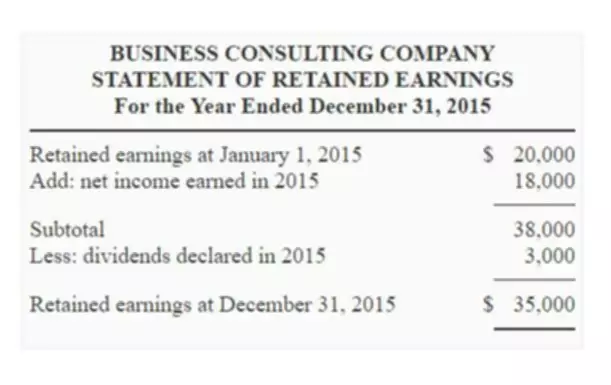Content
- Accounting Cycle & Recording Transactions (debits credits) NOTES & Activities
- The An Excel-Based, Multi-Year Accounting Cycle Project for either the First Intermediate Accounting Course or an AIS Course
- Results for accounting cycle
- Office for the Advancement of Teaching and Learning
- Students also viewed
- ACCT 2301 Accounting Cycle Project – Solutions
- Accounting Cycle Project
- Chapter 10 f – Accounting Cycle Project 14e ( .xlsm
- ACCOUNTING CYCLE – POSTER
Second, using absolute value ensures the capture of an error regardless of the direction of the error. Third, if the balance sheet balances to within $2, the result of the formula is a zero in cell D37. Fourth, if the balance sheet does not balance to within $2, the formula yields the absolute value of the difference in cell D37. Reporting the absolute value of the difference is important in two ways. First, it identifies the amount of the error to make it easier to determine what caused the error if one exists.

To the right of this area is a listing of the net income amounts for each of the three years along with a graph depicting the income amounts for each year. This enables the instructor to quickly determine if the changes in the variables from one semester to the next result in a reasonable income amount. The CODE function returns a numeric code for a text string based on a character set in the computer. Therefore, the formula identifies a specific letter in the student’s name and converts that letter into a number. Then, the formula multiplies that number by a factor of the instructor’s choosing, which is in cell E52.
Accounting Cycle & Recording Transactions (debits credits) NOTES & Activities
The goal of the first assignment is to have students learn the process of the accounting cycle. The goal with the second assignment is to have the students review the process learned in the first assignment and learn a couple of additional transactions. However, Tegrity has enabled some of the students to simply mimic the process they were watching on Tegrity, without actually learning the accounting cycle in the first assignment. There is no Tegrity video for the second assignment, though we provide an Excel file that shows the correct accounting for some of the transactions involved in that assignment. Given that some students complete the first assignment without actually learning the accounting cycle, they have no concept of how to even begin the second assignment. This provides the instructor with the opportunity to discuss the importance of learning, as opposed to memorizing accounting information.
- The process of correcting mistakes when the general ledger is closed is a valuable learning experience.
- Second, it enables a quick summary of the diagnostic section and reporting if the file is not operating in the manner anticipated.
- The transactions in the second year are more difficult because they include depreciation, long-term investments, and book/tax timing differences for both depreciation and the unrealized gain on long-term investments.
- It is the first year cycle that is the most relevant to an AIS course as it presents an entire manual accounting information system.
- Given that some students complete the first assignment without actually learning the accounting cycle, they have no concept of how to even begin the second assignment.
The use of Tegrity, which is a video capturing system, can make the implementation of the project much easier. Instead of spending time during class going through a detailed accounting cycle project, the instructor can instead record the completion of the first year of the project. The students watch this video outside of class while working on their assignment. The recording can cover everything from posting from the five books of original entry through closing entries.
The An Excel-Based, Multi-Year Accounting Cycle Project for either the First Intermediate Accounting Course or an AIS Course
It takes 3 to 4 hours for the student to take Lenny’s through the entire
Accounting Cycle for the month of July. After completing the project, the student
electronically submits her ACP file to her instructor for grading. Solid Footing’s Instructor Support software contains grading software for the
ACP. Utilizing the ACP grading software, it takes about 5 seconds to grade a
student’s project. The grading software gives the instructor the option of printing
an ACP grade page or outputting a grade page file.
- Students therefore have resources, but they have to think about what they are doing instead of simply replicating a process.
- However, the second assignment appears to represent a huge leap for the students.
- A review of the financial statements follows this to ensure that they tie to the adjustments worksheet, articulate and have appropriate disclosures and formatting.
- The student opens the ACP file that is part of the Solid Footing Software, and
then initializes the project by entering her unique ACP code that came with her
Solid Footing book. - Cell C18 is the summary of the diagnostics section and uses the following formula.
As stated previously, the amounts in the file change based on the student name. The amounts shown in Table 2 result from the use of Joe Average Guy entered into cell C1 on the assumptions worksheet. The concept is to make the first year of the project (20X1) relatively easy in terms of the accounting issues. This ensures that the students are comfortable with the process of maintaining all aspects of the accounting system, including the use of debits https://www.bookstime.com/ and credits. Manually posting the information to the general ledger from the various books of original entry reinforces the relationship between the ledger accounts and the journals and takes the mystery out of the system. In essence, while few manual accounting systems exist these days, we do not want the students to become so dependent on computerized accounting systems that they do not understand what those systems are actually doing.
Results for accounting cycle
The grade page can then be
either physically or electronically returned to the student. The grading software
also prepares for the instructor a Grade Summary Report for all graded ACPs. The project accounting is a great capstone for the student’s Solid Footing
learning experience. Because of the complexity of the file, diagnostics monitor the system to ensure that it is operating as it should.
- The project has three year ends, which are labeled 20X1, 20X2, and 20X3 for ease of use from one semester to the next.
- Difficulties can also arise with the amount of the estimated tax payment being greater than the tax expense, resulting in a tax receivable instead of a tax liability.
- In essence, while few manual accounting systems exist these days, we do not want the students to become so dependent on computerized accounting systems that they do not understand what those systems are actually doing.
- The grading process starts with comparing the student’s adjustment worksheet to the solutions.
The students struggle with the deferred tax implications of the short-term investment, as well as the differences in recording and closing the unrealized gain. The inclusion of both long-term and short-term investments is very instructive because the students must think through not only the entries, but also the financial statement and tax implications of these investments. The instructor discusses common errors made on each assignment when returning it to the students after grading. Both the second and third assignments include the post-closing trial balance from the previous year. The students must first journalize and post correcting entries for any mistakes made in the previous assignment. The process of correcting mistakes when the general ledger is closed is a valuable learning experience.
Office for the Advancement of Teaching and Learning
Second, the implementation of the project is reasonable for the instructor, including ease of assigning and grading. Finally, the instructor can use the project for assurance of learning purposes for accreditation. The project spans a three-year period, providing students with the repetition typically required for deeper learning. The project is one of most frequently mentioned items in the open-ended questions on the student evaluation of teaching. Generally the statements are positive, though sometimes the students dislike the effort required to complete it and learn the accounting cycle, as indicated by the following two comments.

In 20X2 and 20X3, the students spend less time working through the accounting system because they have already done so for year 20X1, but more time determining how to handle the more complex accounting issues. The time required to complete the assignment is approximately the same for all three years. The amount of learning taking place impacts the amount of time the students spend working on the assignments.
Students also viewed
The second assignment builds on the first in that it has the same accounting process, but has more difficult transactions. The second assignment should be an incremental increase in rigor and challenge for the students. The students learn the process with the first assignment and reinforce that knowledge with the second assignment.
2023-05-30 TSX:CIA Press Release Champion Iron Ltd – Stockhouse Publishing
2023-05-30 TSX:CIA Press Release Champion Iron Ltd.
Posted: Tue, 30 May 2023 23:12:45 GMT [source]
They found it interesting and were motivated to put forth time and effort to the project. Upon completion of the project, students showed improvement along Anderson and Krathwohl’s (2001) factual, conceptual, procedural, and metacognition knowledge dimensions in learning the subject matter. What is both interesting to us and instructive to the students is the fact that some of the students struggle with completing the second assignment (year 20X2).
We believed that replication of the process over multiple years would help reinforce the ideas and result in greater learning. Additionally, we wanted to ensure that the students had basic Excel skills. This worksheet contains most of the computations performed in the file, and the amounts are cell-referenced in other worksheets throughout the file. Figure 1 is a screen capture of a portion of the assumptions worksheet. The instructor enters the student’s name in cell C1 of the assumptions worksheet by cutting and pasting the names from the grade file to ensure consistent spelling and capitalization over the three years. This process is important because the file uses the student’s name to determine the amounts in the project.


Social Links: